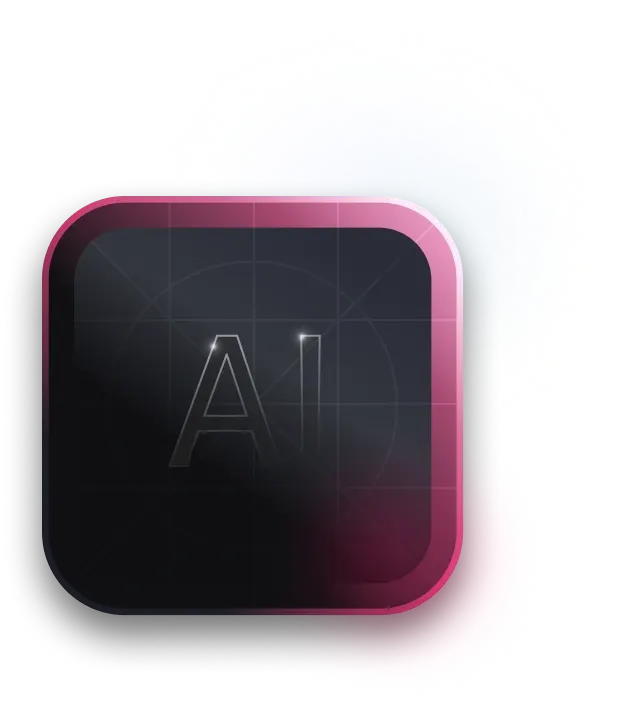Generative artificial intelligence (AI) has become a transformative force for businesses and is expected to drive at least $4.4 trillion for the global economy. Many organizations have started using this new technology across the most relevant industries. However, AI technology implementation calls for a good understanding of the associated AI stack. In this article, we will explore the roadmap that guides developers through the complex nature of generative AI.
What is an AI Tech Stack?
The AI tech stack is an individually assembled set of tools, methodologies, and platforms used to develop AI solutions. It is crucial for organizations that decide to innovate products, automate processes, and drive value across diverse industries such as construction, gaming, art, design, healthcare, and more.
A proper generative AI tech stack enables prompt development and deployment of up-to-date apps. It also leverages the whole smart system’s accuracy, scalability, and reliability. To help you keep your facts straight and get your basics down, let’s go through the essentials of AI-focused tech stacks — what they consist of, how to pick the components, and how they work in action.
Key Components of Generative AI Tech Stack
AI developers may organize the creative and technical process in various ways.
The baseline is to mix and match the following bunch of different components to achieve the best-tailored results:
-
Deep learning frameworks (PyTorch, Keras, and JAX) provide the infrastructure for building sophisticated models and manipulating complex data. They serve as the basic blocks for creating applications, reducing development timeframes, and optimizing the level of complexity. If you are not the one coding, you still need to know the frameworks your team might use;
-
Data collection and preprocessing tools (Apache Kafka, Apache Spark, and Apache Flink) are used for collecting, cleaning, and managing large datasets from various sources to make them suitable for training AI models. It’s essential to understand that data lies at the foundation of AI applications. Special tools help facilitate real-time data streaming, excel at stream processing, and create an intuitive interface;
-
Programming languages (Python, R, and Julia) are the building blocks of software development, giving instructions to computers on how to complete different tasks. Python is the most common choice for the machine learning technology stack due to its simplicity, extensive library, and responsive community support. Alternatively, R is widely used for statistical analysis, and Julia is oriented on highly effective computing processes;
-
Model training platforms (Google Cloud Platform and Microsoft Azure) are designed to integrate vast amounts of data into an AI environment. This capability enables AI systems to master patterns and solve complex problems efficiently. Utilizing well-curated or domain-specific datasets enhances a model’s ability to interpret data with greater precision, nuance, and accuracy, particularly in applications requiring detailed domain insights. Cloud platforms significantly facilitate data handling and model operations, offering scalable and flexible solutions that streamline the development and deployment of AI models;
-
Deployment tools (Docker, Kubernetes, and WebAssembly) make the trained AI model accessible to end users. These are usually databases, cloud platforms, and frameworks that provide data flexibility and scalability integration required for generative AI solutions. Businesses can proceed with self-hosting or may rely on competent deployment services;
-
Monitoring and optimization tools (TensorFlow Profiler, AWS CloudWatch, and LIME) are tuned for tracking the performance of your AI application. Based on the reports, they can make the necessary adjustments. They also help businesses understand how AI models make decisions, enabling transparency and trust.
Learn how generative AI is enhancing creativity and efficiency in construction
AI Tech Stack Layers
Every other AI technology stack is usually built on three major pillars. Each plays a particular role, contributing to the general functionality and efficiency of the system.
The infrastructure layer
Businesses should meet the basic needs of AI models. This may include specialized hardware requirements like advanced graphics processing units (GPUs) for training different models, as well as chips required for AI operations. Some hefty processing power is needed to manage huge data assets time-efficiently.
Software tools like deep learning frameworks allow developers to establish custom AI models to build POCs and optimize generative development. Other tools help preprocess, monitor, and visualize data for smooth deployment.
Cloud computing provides the storage and enables processing power required for complex AI development and deployment operations. These systems help organizations scale AI applications fast and at a low cost.
The model layer
The generative AI tech stack involves various models intended to recognize patterns and produce content. These models can either be developed in-house or utilizing open-source generative AI frameworks. Also, they can differ in scope as follows:
- General AI models aim to perform a wide range of tasks, being able to learn over time. The more data they process, the better performance they can show. This promises a huge potential for making accurate predictions and solving complex business problems.
- Specific AI models are meant for unique purposes, such as generating business statistics or making financial predictions. The narrow dataset allows these models to interpret the data more deeply.
- Hyperlocal AI models are finely tuned to serve very specific geographic areas or communities. These models leverage local data to perform tasks that are highly relevant to particular locales or demographic groups.
The application layer
Collaboration between humans and machines becomes possible at the application layer, which makes AI models accessible and flexible. Organizations can use special apps that incorporate proprietary models into end products and organize internal processes, from data collection to deployment. The models can be reused and put at the core of new software, bringing out products like ChatGPT.
Applications can also rely on non-proprietary technologies. Based on open-source frameworks, they can be available to more users. This way, organizations can meet the individual needs of their customers.
Our AI and Data Science Case Studies

How to Decide on the Right Generative AI Tech Stack?
Choosing a generative AI tech stack requires careful consideration to enable optimal performance and efficiency. Pay attention to different factors when making the final decision.
Project description
It’s all about your project goals and specifics. Mind that, unlike small projects, medium and large ones require more complex technologies to ensure strong performance. Here are the project specifications to consider:
- The type of data you deal with may involve written text, music, visuals, or something else.
- The project’s complexity is dictated by the number of model layers, input variables, and dataset assets.
- The accuracy is crucial for sensitive projects, e.g., those dealing with drug research or finances.
- The project’s scalability demonstrates your intention to generate many variations or support a growing number of users.
Experience and resources
Organizations require technical knowledge to recognize the right AI tech stack, even if they get professional assistance. They should be able to distinguish between different technologies, so they can pick the one that suits their business needs most. These aspects of in-house experience and resources may influence the technology stack:
- The qualification of the development team;
- The availability of resources;
- The availability of training and support resources;
- The budget for the project;
- The system maintenance and control, etc.
Scalability
Organizations should decide whether they want their project application to handle an increased load. Hence, your tech stack should be able to manage the growing trend if necessary. Scalability is to be focused on due to a bunch of important reasons, like:
- The number of users within the system estimates the flow of requests.
- Real-time processing means that the system requires scalability to deal with the flow of requests.
- Cloud computing helps boost scalability through the on-demand provision of software resources.
- The size of the dataset determines the choice of hardware and software.
Let’s turn your challenges into opportunities with custom software
Security
Big data must be protected most efficiently. When forming a machine learning tech stack, it is important to select high-security technologies. Here is how the need for security can influence the choice of technology:
- Generative AI systems are trained based on expansive datasets, some of which might include sensitive data.
- The models integrated with generative AI are significant intellectual assets that require protection.
- Ensuring the safety of the technology supporting generative AI systems is essential in terms of unauthorized access.
- Legal or regulatory obligations need to be addressed, depending on the active generative AI system.
- User authentication and authorization measures are obligatory to manage system or data access for generative AI systems.
Real-World Cases for Generative AI Technology
The adoption of generative AI technology sharpens up a competitive capacity that can be leveraged for years in advance.
Here are several advantages that matter:
- Faster product innovation: Generative AI can increase development strengths, boost productivity, and reduce operational costs. That can result in innovative software that enhances business value.
- Hyper-contextualized experiences: Generative AI can take customer analytics to a new level by considering customer demands and behaviors.
- Enhanced business productivity: AI tech stacks can help workers process large amounts of data in plain human language, making quick insights.
- Accurate predictive analytics: ML tech stacks can help organizations optimize working processes, from business forecasting to transportation scheduling.
- Strengthened cybersecurity: Generative AI can help organizations identify network anomalies and protect their businesses from cybersecurity risks.
Conclusion
An artificial intelligence technology stack is the basis for incorporating custom AI solutions inside your organization or for your target user audience. With the right hardware and software components in place, it gives you the power to streamline workflows, minimize expenses, and maximize performance.
This may allow your business to create highly customized solutions that meet unique target audience needs and accomplish your strategic plans. If you feel like getting some help achieving all of that — get in touch with the Requestum team. We know how to make your business project run smoothly from the very start.

Our team is dedicated to delivering high-quality services and achieving results that exceed clients' expectations. Let’s discuss how we can help your business succeed.


SHARE: